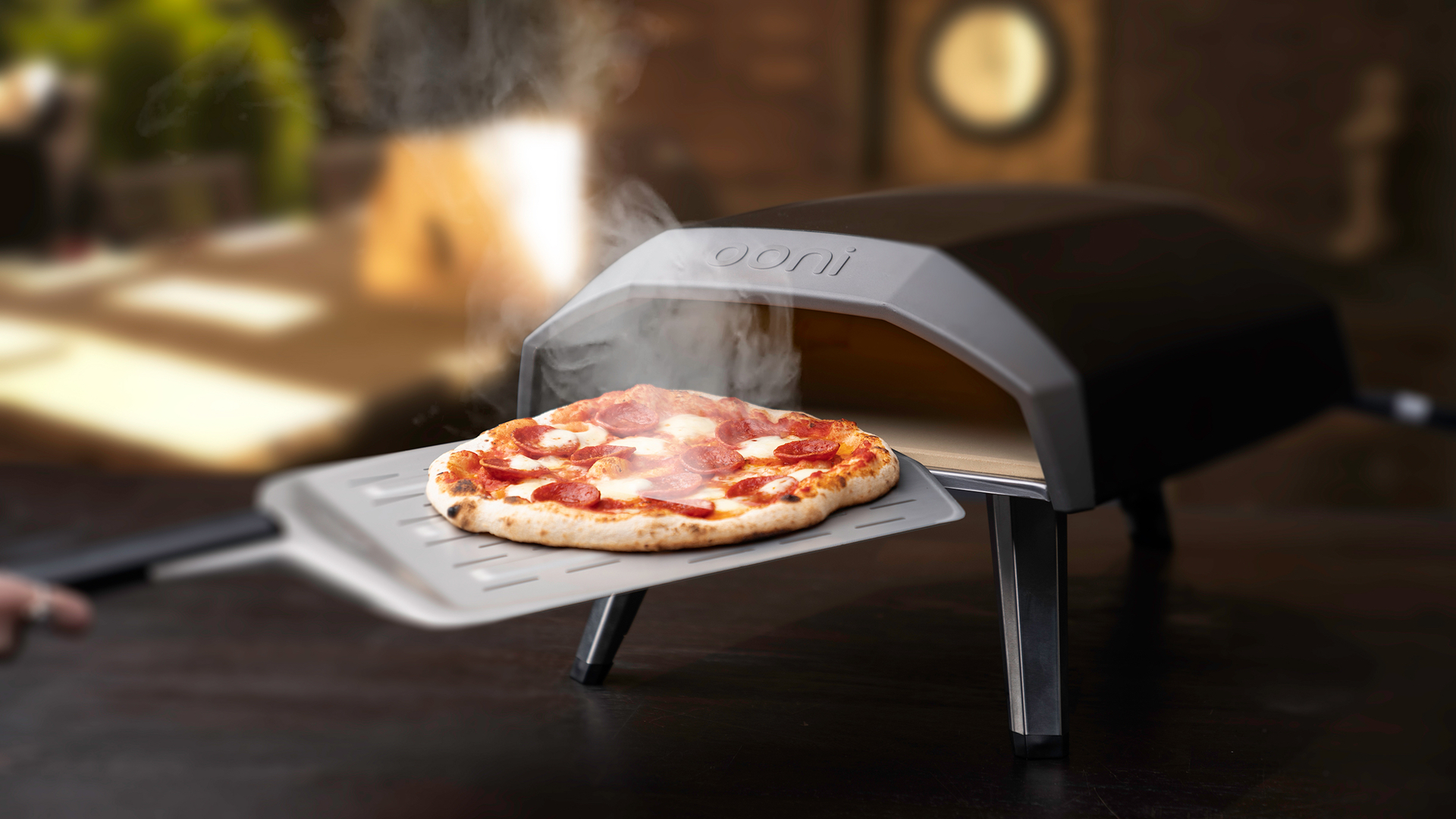

Welcome to our comparison between two of the very best pizza ovens that buck the wood-fired trend in favor of using electricity and gas.
‘Nooooo, pizzas must be made a using a wood’, I hear you holler from afar in a fake Italian accent. But stick with me because there are some valid reasons why people who are normally useless at making pizza will love these two ovens which are good for pizzas up to 12 inches in diameter.
The big question is – which oven should it be? The all-singing electrically-fueled Sage The Smart Oven Pizzaiolo or the cheaper, no-frills gas-fired Ooni Koda 12?
Sage The Smart Oven Pizzaiolo vs Ooni Koda 12: design
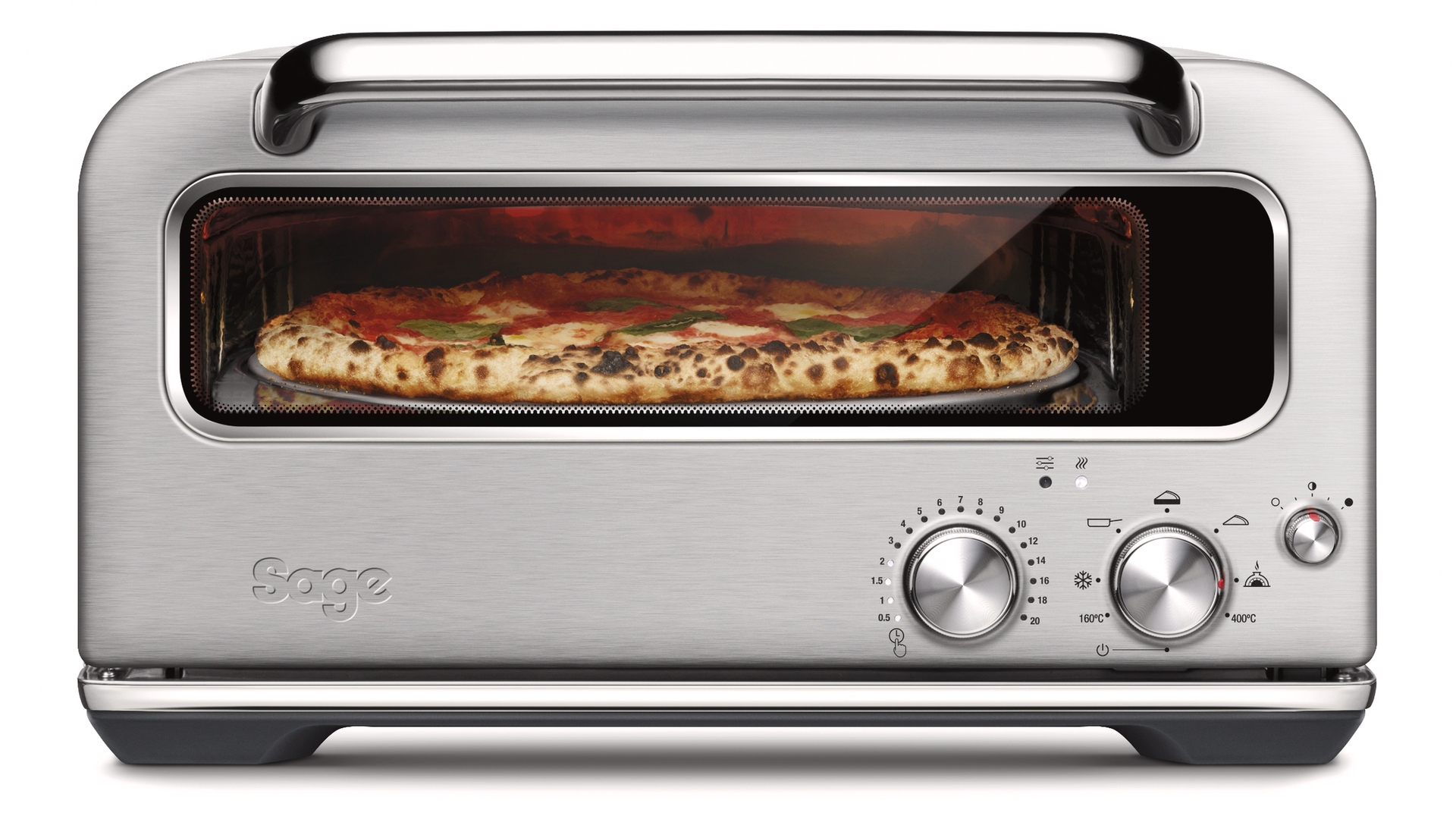
It's pricey but this indoor pizza oven rocks on all fronts
Sage is a major manufacturer of high-end small home appliances. It has never made a pizza oven before. Ooni is a major manufacturer of outdoor pizza ovens. It has never made a kettle, microwave or coffee machine before. Given those stats, you might think Ooni would walk this one but, to some degree, you’d be wrong.
The Sage Pizzaiolo runs on electricity and is actually designed for indoor use, although it would be perfectly acceptable to use it outdoors – when it isn’t raining, obviously. There is absolutely nothing negative to say about its design which is stylish in every way, from the stainless steel-clad exterior and glass letterbox viewing window to the way the pizza stone inside articulates outwards by several inches as you open the door.
By contrast, the Ooni Koda 12 runs on gas and is a much more simplified design but no less attractive, at least for an outdoor model. Its front portal is big enough to get the pizza on the stone but it’s not as easy a task as the Sage.
From a storage point of view, the Koda is designed to be stored in a shed or at least under a cover (it weighs 9.25kgs) while the Sage Pizzaiolo must only be stored indoors or an equally moisture-free environment. That said, the Sage Pizzaiolo is most certainly stylish enough to leave on the worktop if you have the space. Otherwise you’ll need to find a kitchen cupboard big enough to accommodate its 47 x 46 x 27cm dimensions.
Sign up to the T3 newsletter for smarter living straight to your inbox
Get all the latest news, reviews, deals and buying guides on gorgeous tech, home and active products from the T3 experts
Sage The Smart Oven Pizzaiolo vs Ooni Koda 12: feel the heat
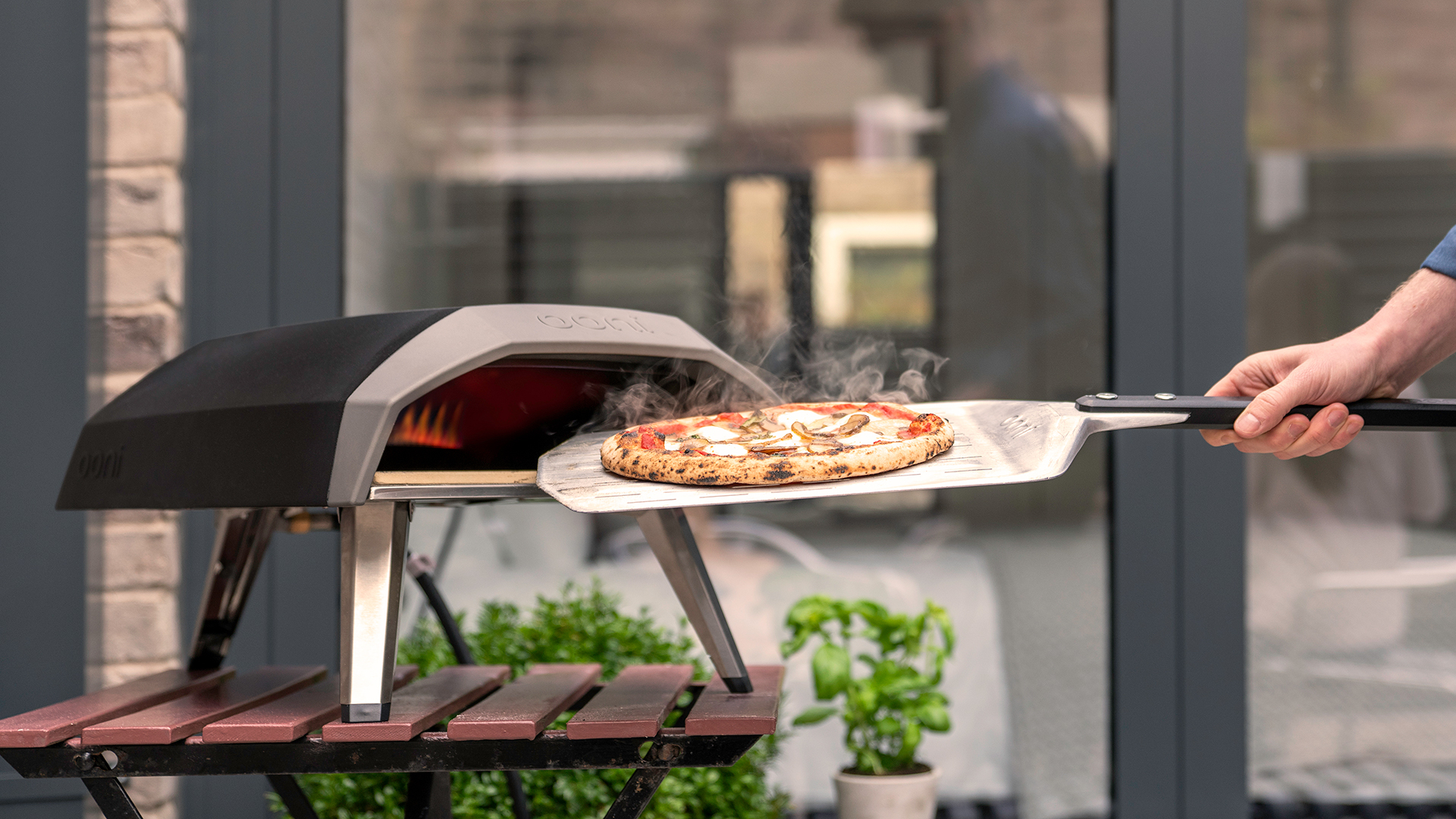
The Ooni Koda 12 runs on Patio Gas and is light enough to transport
Although some ready-made, off-the-shelf pizzas are perfectly edible, they are in no way to be compared to the real thing which is always made using pizza-specific dough and fresh good-quality ingredients. But supermarket pizzas aren’t the only enemy here, it’s the house oven which simply cannot get anywhere near the temperature required to properly bake a proper pizza. So what is a proper pizza?
A genuine Neapolitan pizza should have a dark, almost dirty and dusty looking base with huge light, airy crusts dappled with leopard spot burns. This is only attainable at home by using a pizza stone (usually made from cordierite) and a temperature of around 400˚C. That’s Centigrade and not our American friends’ old fashioned Fahrenheit. The combination of these two things is what makes a home-baked pizza look, taste and feel like an authentic Italian restaurant-baked pizza.
Both of these ovens are equipped with cordierite stones and both reach the magic 400˚C mark. In fact, if left on full heat for longer, the Ooni is able to reach between 450˚C and 500˚C, which is nearest to a Pizza Express oven. This means it will bake a Neapolitan-style pizza quicker than the Sage – in about 60 seconds.
The secret with both machines is to start the heating up process at least 30 minutes before baking time. The Ooni heats up to around 500˚C in about 20 minutes if the gas is on full power while the Sage reaches its maximum 400˚C in about 25 minutes.
Aside from the fact that one product uses electricity and the other gas, one of the other key differences is how the heat is distributed. Like a wood-fired oven, the Ooni Koda’s highest heat is towards the rear, near the seat of the gas flame. Although the flame licks substantially over the top of the entire pizza, it’s definitely less hot near the front which is why you must turn the pizza 180 degrees midway through the cooking process or the rear end will basically burn.
Conversely, the Sage Pizzaiolo’s heat source is produced by two red hot oven rings, one about four inches above the stone and the other directly beneath. This combination of all-round heat means you don’t really need to turn the pizza because everything, including the bottom and side crusts, is cooked evenly.
Sage The Smart Oven Pizzaiolo vs Ooni Koda 12: features
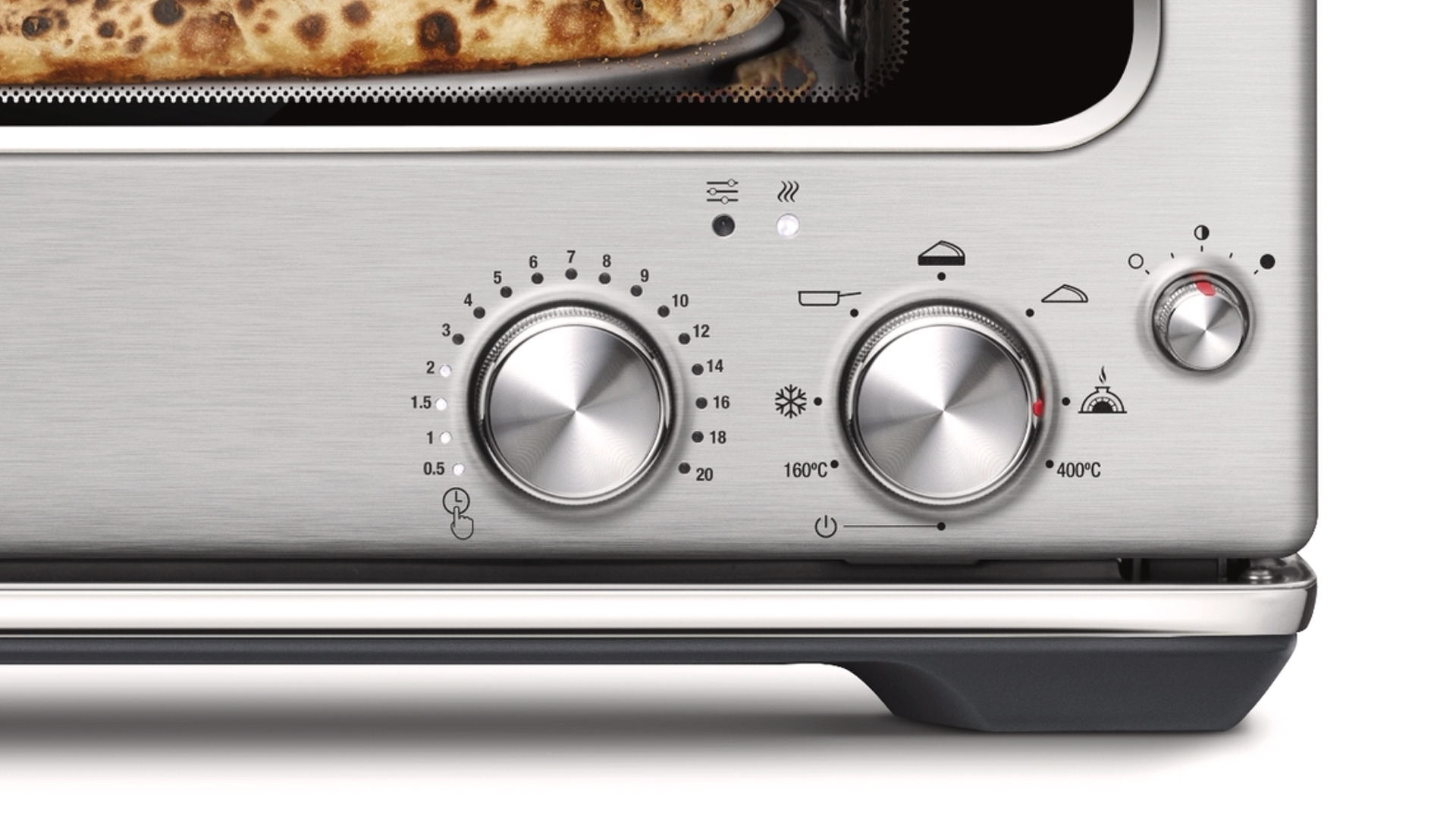
If you want an easy life making pizzas, you might not find a more suitable oven than the Smart Oven Pizzaiolo
It’s safe to say that this chapter will be devoted almost entirely to the Sage Pizzaiolo because it is quite literally chock full of tech.
This pizza oven is designed to be as easy as possible to use so on the front there are just three dials – a timer on the left, a pizza variety dial in the middle and a small optional browning knob on the right. The pizza variety dial is comprised of the following icons: 160˚C, defrost, deep pan, thick crust, thin & crispy, wood fired and 400˚C. Simply select your pizza icon of choice and the oven selects the best pre-programmed ratio between the two heating elements and the recommended time it will take to bake the pizza. The second you put your pizza in, tap the preconfigured timer dial and a beep will sound when the pizza’s ready. It’s very accurate though I tend to leave it in about 20 seconds longer because I like a slightly burnt crust. For those who prefer deep pan pizza, the machine comes with a pan for the job.
The manual function is more complex, mind, and includes placing the included magnetic interface sheet over the dials and pressing a couple of buttons. Once the interface is in position, the right and left-hand dials become temperature distribution controls for each heating element (from 160˚C to 400˚C). This allows the user to select specific heat sources both above and below the stone.
By comparison, the Ooni Koda is entirely manual. You turn the gas on (it runs off a standard Patio Gas bottle), wait until the stone is hot enough and bung in the pizza. Ah, but how do you know what temperature the stone is if there is no thermometer or buzzer to tell you? Easy, you buy an Ooni Infrared Thermometer, point the laser beam at the stone and read the display.
Sage The Smart Oven Pizzaiolo vs Ooni Koda 12: performance
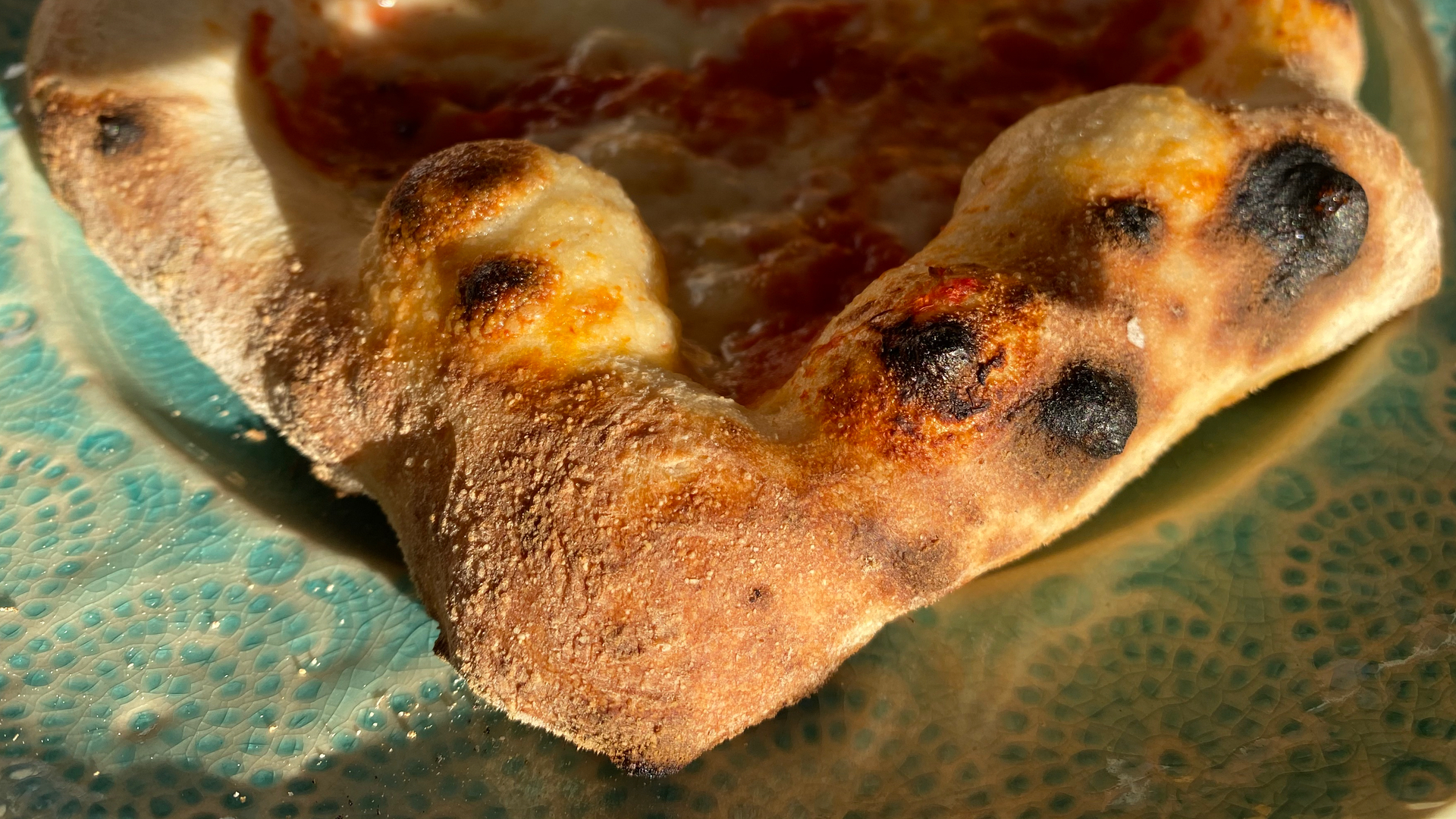
Now that's what we call a proper pizza. With the right consistency of dough, this is what you get.
Both of these machines perform superbly well, producing pizzas with all the right criteria, including a dark ’n’ dirty base with excellent crisp, a superb outer crust replete with leopard spots, and toppings that aren’t cooked to within an inch of their lives.
However, the Sage Pizzaiolo is much, much easier to use and is to all intents and purposes the perfect pizza oven for beginners. It’s simply almost impossible to go wrong with this machine, from the ease of getting the pizza onto the protruding stone to the entire baking process. I’ve reviewed about 10 pizza ovens to date and this is the only one I’ve never cocked up using.
The Ooni is much easier to use than a wood-fired oven because you don’t have to warm it up three hours beforehand and keep feeding the fire. However, because its stone is tucked quite deep inside, it can be tricky throwing the pizza off the peel. You also need to keep an eye on it for the entire process because its really easy to burn and ruin a pizza by not being attentive. I kid you not – if you chat to a guest for just 10 seconds beyond the recommended time with the Ooni (or any other similar pizza oven), chances are the back end will have burnt to a cinder and you’ll have to start all over again.
Sage The Smart Oven Pizzaiolo vs Ooni Koda 12: verdict
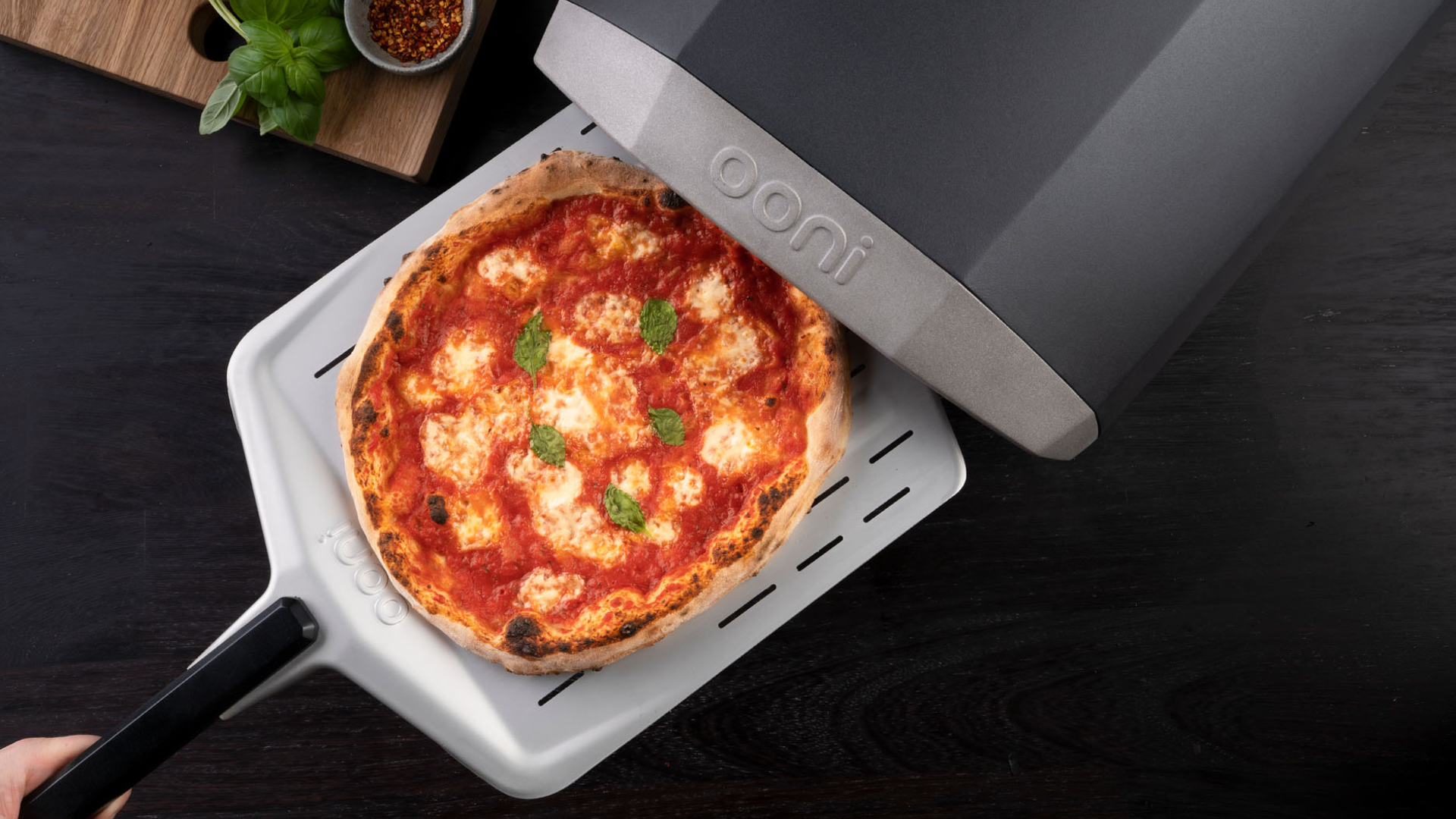
At £299, the Ooni Koda 12 is clearly the better bet if price is an obstacle. Although it’s designed for outdoor use only, this pizza oven produces perfect pizzas pretty much every time. However, you do need to be more on the ball than you do with the Sage Pizzaiolo, which is arguably the most hassle-free and simple-to-use home pizza oven you can buy. The only major caveat is that the Sage costs a whopping £699.95, and that may be a financial step too far, unless you really, really like pizza.
- Read our how to cook pizza at home guide
Derek (aka Delbert, Delvis, Delphinium, Delboy etc) specialises in home and outdoor wares, from coffee machines, white appliances and vacs to drones, garden gear and BBQs. He has been writing for more years than anyone can remember, starting at the legendary Time Out magazine – the original, London version – on a typewriter! He now writes for T3 between playing drums with his bandmates in Red Box (redboxmusic).
-
 3 overrated shoulder exercises, according to a fitness expert (and what to do instead)
3 overrated shoulder exercises, according to a fitness expert (and what to do instead)Sculpt 3D shoulders whilst minimising injury with these three alternative exercises
By Bryony Firth-Bernard Published
-
 Polar’s new subscription feature lands in the shadow of Garmin’s Connect+ rollout
Polar’s new subscription feature lands in the shadow of Garmin’s Connect+ rolloutPR genius or timing disaster? Polar’s new Fitness Programme adds adaptive training to its ecosystem
By Matt Kollat Published
-
 New Matter leak reveals exciting smart garden tools heading our way – a lot sooner than expected
New Matter leak reveals exciting smart garden tools heading our way – a lot sooner than expectedThat was pretty unexpected!
By Lizzie Wilmot Published
-
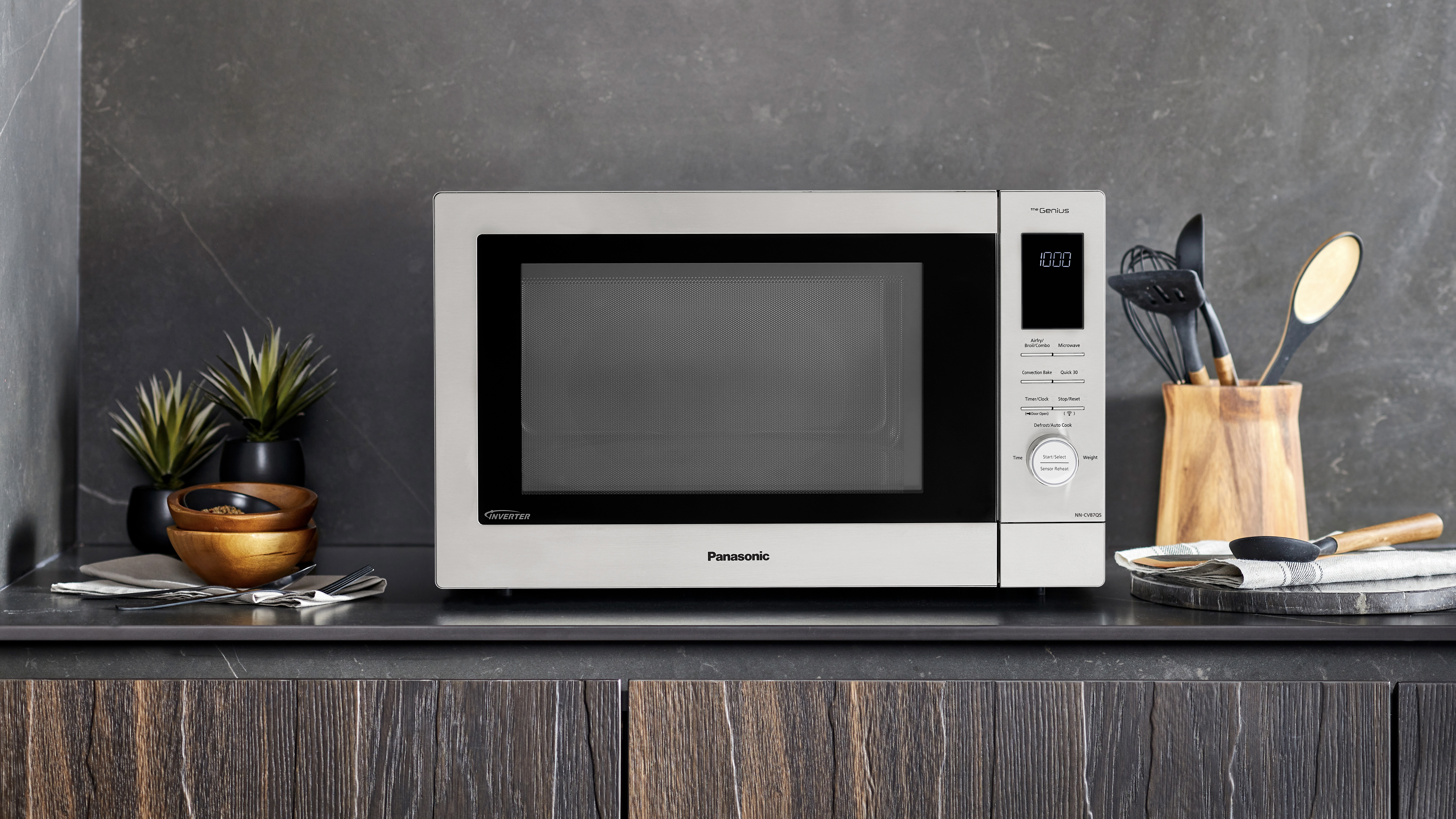 Panasonic's new 4-in-1 microwave is the smartest kitchen appliance I've seen in a while
Panasonic's new 4-in-1 microwave is the smartest kitchen appliance I've seen in a whileDon't even get me started on the app
By Lizzie Wilmot Published
-
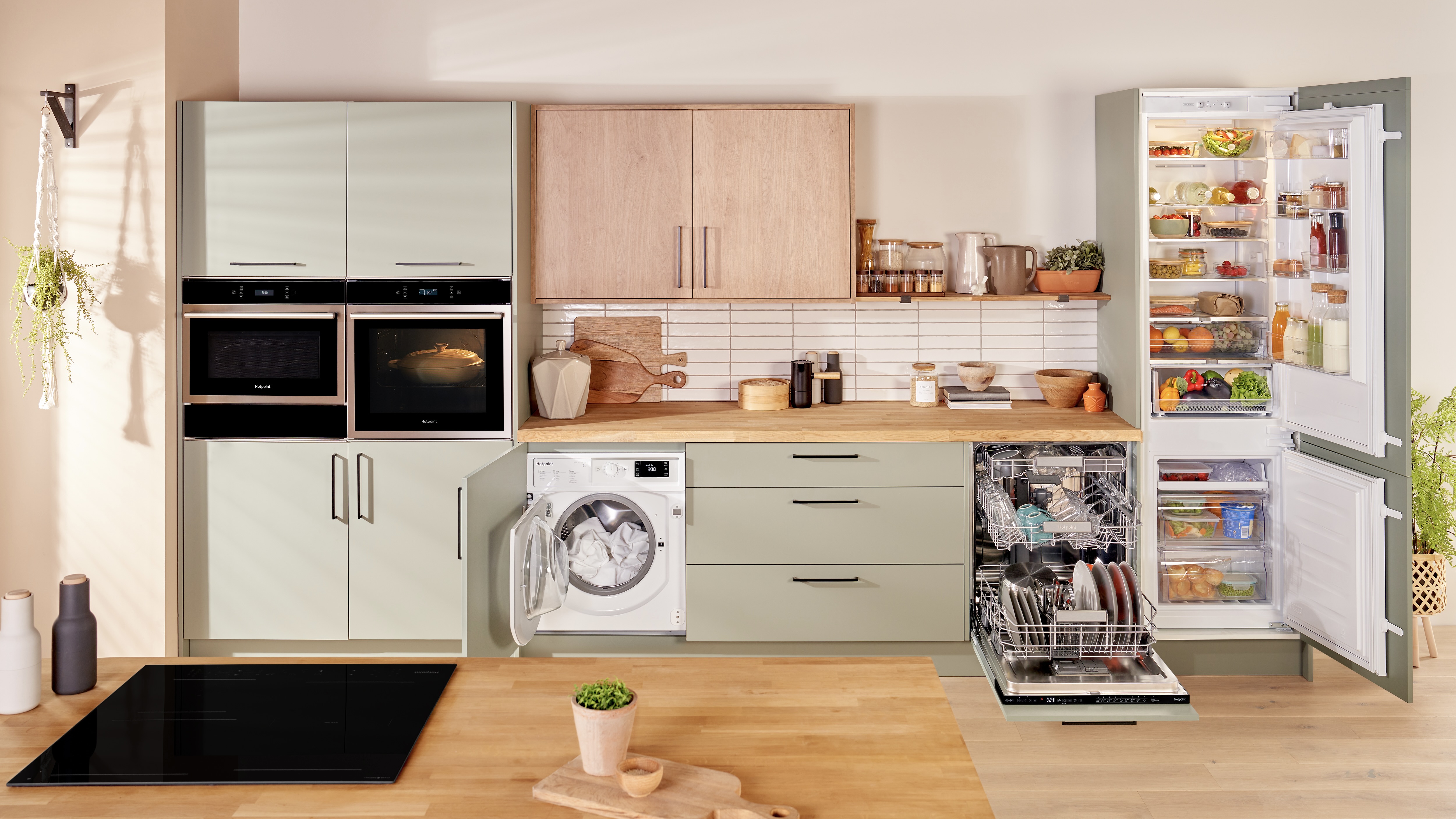 10 must-have kitchen appliances you need for your home – all available from AO
10 must-have kitchen appliances you need for your home – all available from AOIs your kitchen ready for an upgrade?
By T3.com Published
-
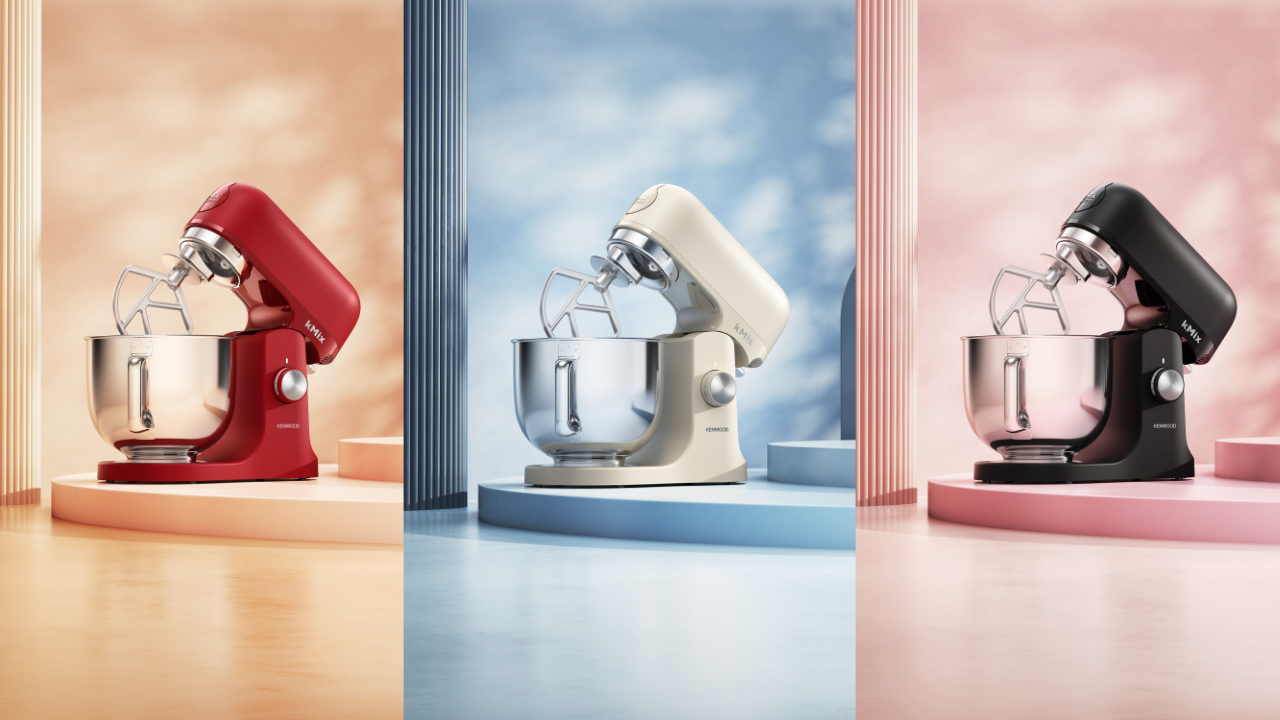 Kenwood redesigns iconic stand mixer in three new stylish colourways
Kenwood redesigns iconic stand mixer in three new stylish colourwaysYou won't be able to stop baking with one of these!
By Lizzie Wilmot Published
-
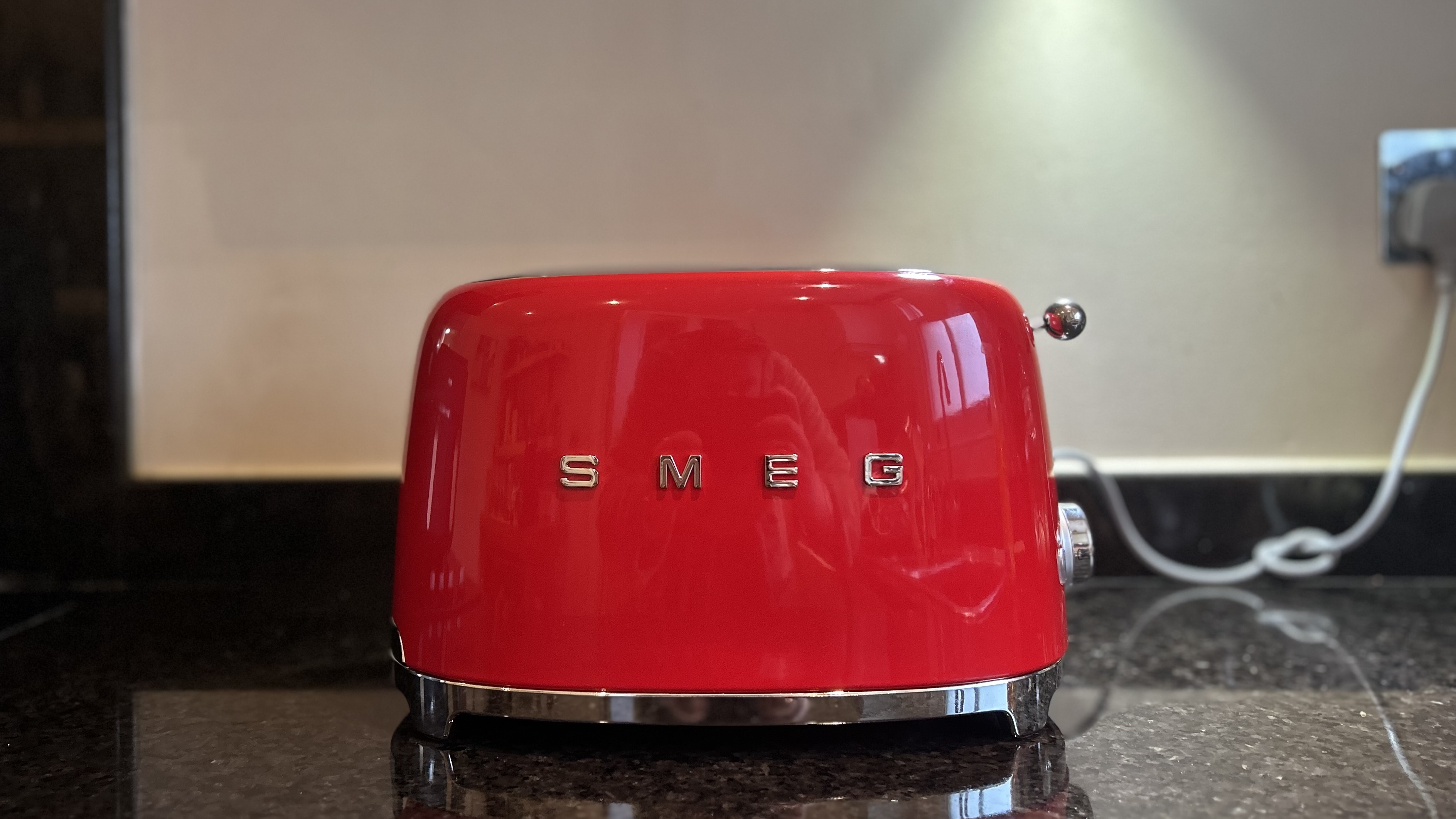 Smeg TSF01 toaster review: a little luxury that makes everyday toasting that much better
Smeg TSF01 toaster review: a little luxury that makes everyday toasting that much betterFirst it was the kettle...now it's toaster time
By Lizzie Wilmot Published
-
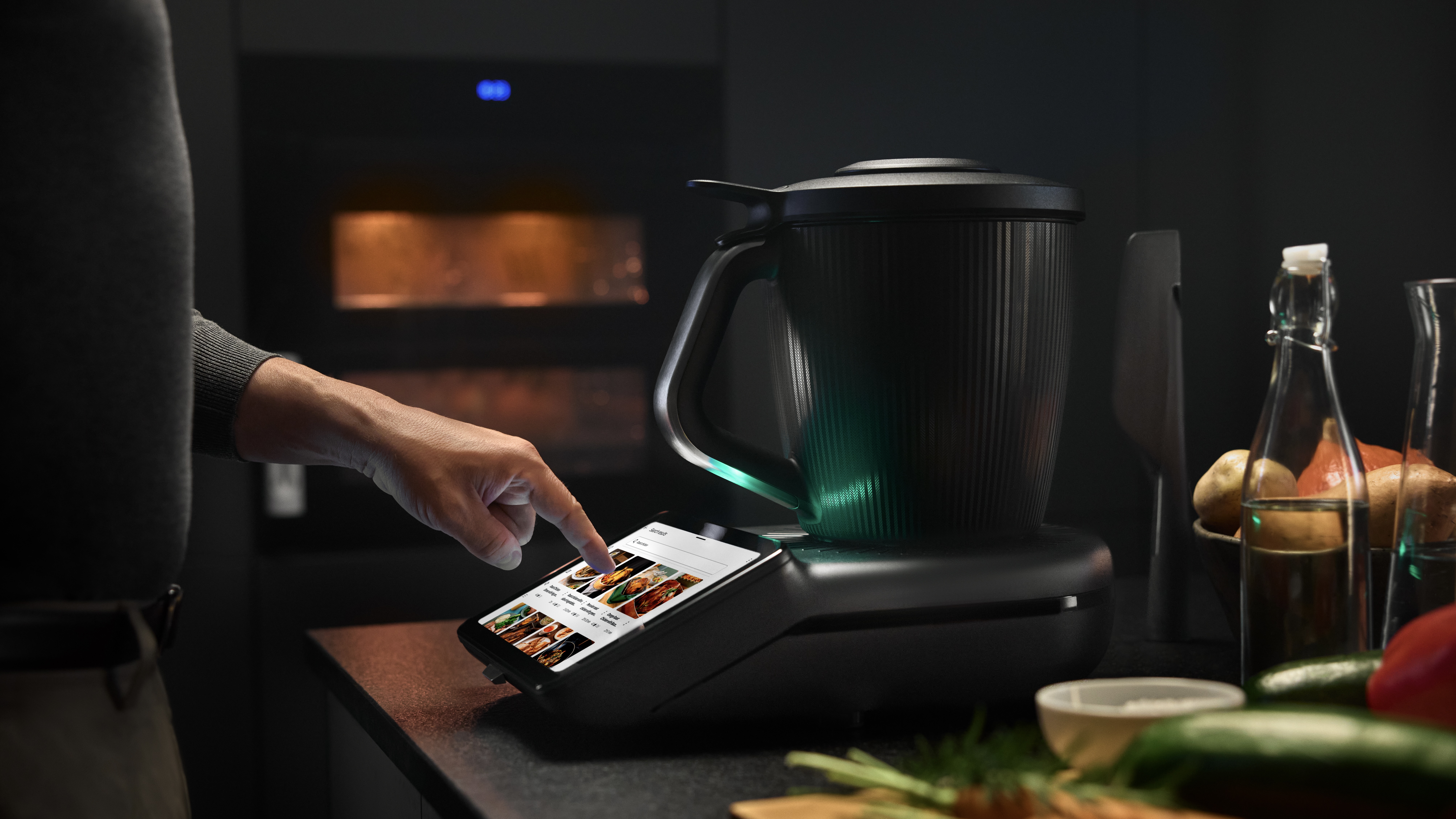 This smart multi-cooker has an integrated 10-inch touchscreen display – genius innovation or overkill?
This smart multi-cooker has an integrated 10-inch touchscreen display – genius innovation or overkill?The Thermomix TM7 is here...
By Lizzie Wilmot Published
-
 Struggling with gift ideas? These are the best Christmas presents for tech-savvy foodies
Struggling with gift ideas? These are the best Christmas presents for tech-savvy foodiesCreate seasonal feasts with ease
By T3.com Last updated
-
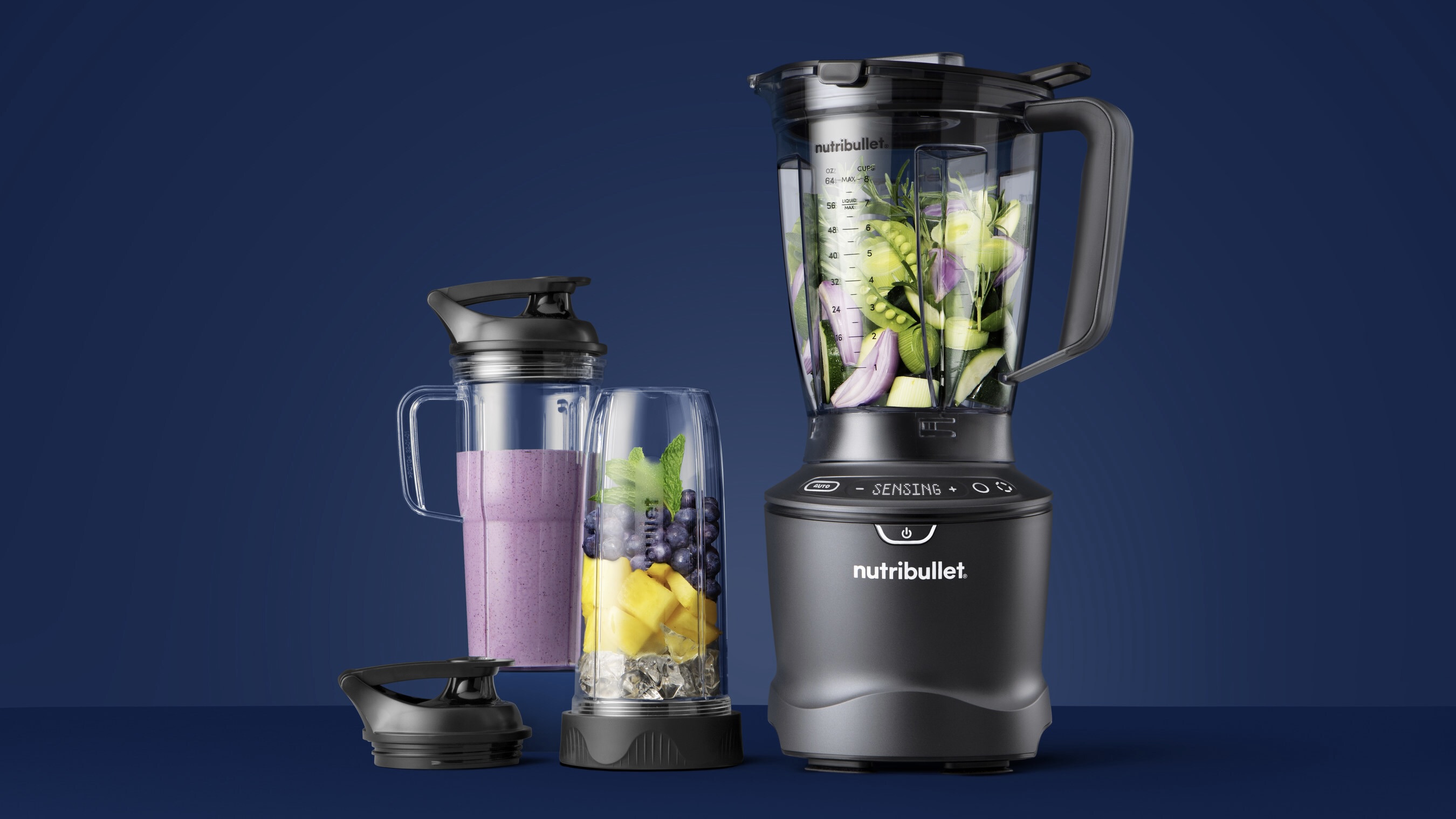 Nutribullet's new blender automatically detects ingredients – and knows exactly what to do with them
Nutribullet's new blender automatically detects ingredients – and knows exactly what to do with themThis is probably the smartest blender the world has ever seen
By Lizzie Wilmot Published